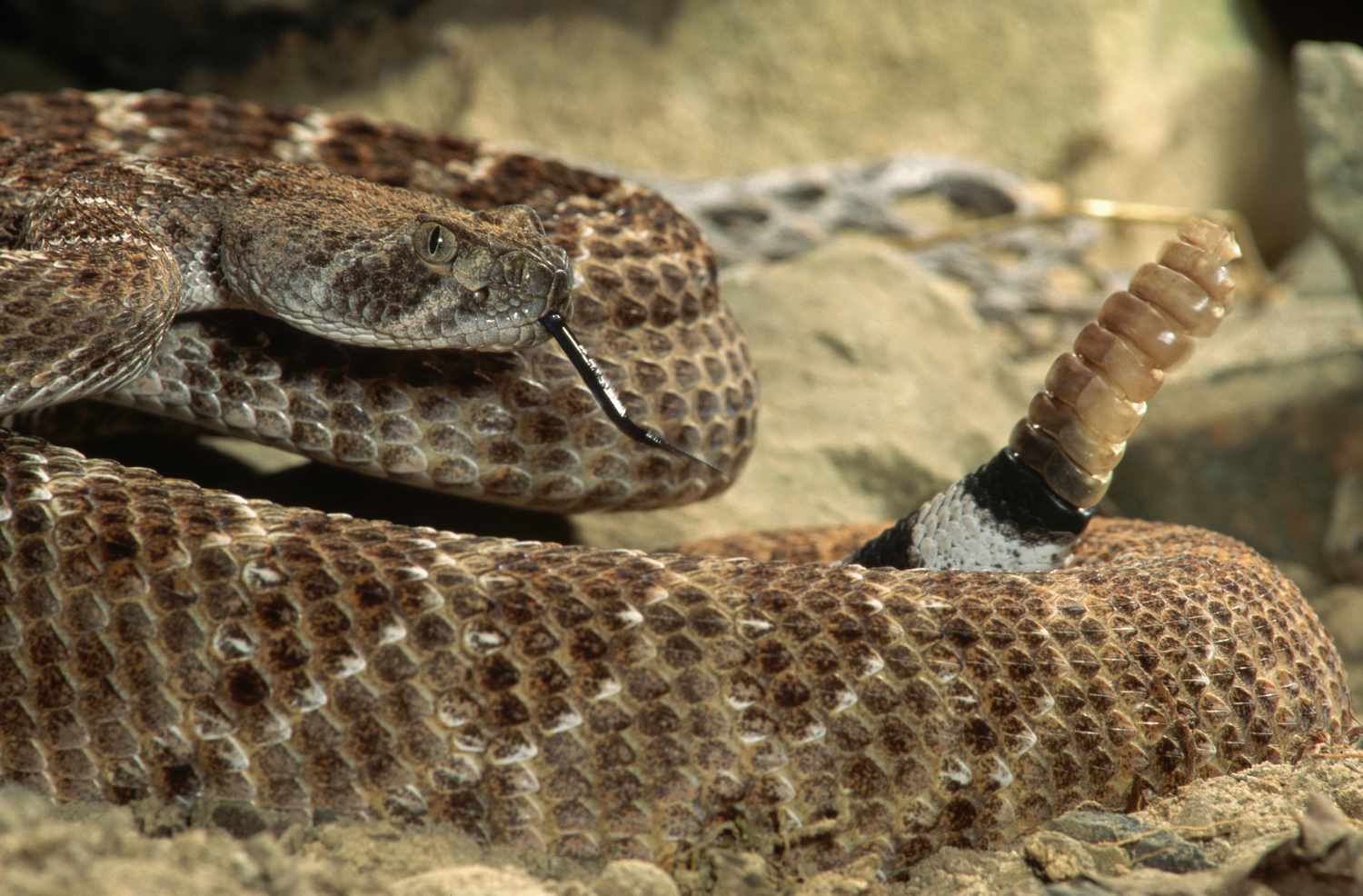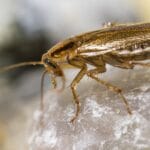Hey there, snake-curious folks! Get ready to dive into the fascinating world of rattlesnakes. In this article, “10 Rattlesnake Revelations,” we’re going to uncover ten mind-blowing facts about these often misunderstood reptiles. From the way they use their venom to the secrets behind their signature rattle, you’ll be amazed at the hidden depths of these awesome creatures. So, sit back, relax, and let’s unravel the captivating world of rattlesnakes together!
10 Interesting Facts About Rattlesnakes
Rattlesnakes! They’re the iconic desert dwellers with the built-in maracas, and let’s be honest, their rattling probably sends shivers down your spine. But did you know these serpents are actually pretty fascinating creatures? Let’s dive into ten intriguing tidbits about rattlesnakes that might just change your perspective.
- Those Rattles? Basically Fancy Fingernails. Yep, those rattling segments at the end of their tails are made of keratin – the same stuff that makes up our hair and nails! Each time a rattlesnake sheds its skin, a new segment gets added to the rattle. So, while it might be tempting to count those segments to determine a rattlesnake’s age, it’s not always accurate. They shed their skin multiple times a year, and segments can also break off.
- Rattlesnakes Have Built-in Night Vision Goggles. Okay, not really goggles, but close enough! These snakes have heat-sensing pits on their faces that allow them to “see” the body heat of their prey in the dark. Imagine having built-in infrared vision!
- Getting Bitten Is Less Likely Than You Think. Despite their fearsome reputation, rattlesnake bites are relatively rare. These snakes would much rather avoid a confrontation than strike. They usually only bite defensively when they feel threatened or cornered. Plus, even if a bite does occur, advancements in antivenom have made treatments highly effective.
- Rattlesnakes Come in a Surprising Variety Pack. Think all rattlesnakes are the same? Think again! There are actually 32 different species of rattlesnakes, and they come in a variety of sizes, colors, and patterns. From the diminutive Pygmy Rattlesnake to the hefty Eastern Diamondback, there’s a whole lot of diversity in the rattlesnake world!
- These Snakes Can Live for Decades. Rattlesnakes are surprisingly long-lived creatures. In the wild, they can live for 20 to 30 years. That’s longer than many household pets!
- Forget Eggs – Rattlesnakes Give Live Birth. Unlike many other snake species that lay eggs, rattlesnakes give birth to live young. Talk about efficient! Baby rattlesnakes are born with venom and a single rattle segment, ready to navigate the world (somewhat) independently.
- Winter Sends Them Snoozing. Don’t we all wish we could hibernate through the winter? Well, rattlesnakes actually do! When the temperature drops, they seek out cozy dens – often sharing them with other rattlesnakes – and enter a state of brumation, which is like hibernation but for reptiles.
- That Venom Is Serious Stuff (But Treatable!). Rattlesnake venom is a powerful cocktail designed to immobilize prey. It’s primarily composed of hemotoxins, which affect blood cells and tissue, and neurotoxins, which disrupt the nervous system. However, thanks to modern medicine, rattlesnake bites are rarely fatal if treated promptly with antivenom.
- They’re Crucial Parts of the Ecosystem. As apex predators, rattlesnakes play a crucial role in maintaining a healthy ecosystem. They help control rodent populations, which in turn benefits plant life and other animals.
- Those Rattles Aren’t Just for Show. Sure, a rattlesnake’s rattle is a pretty effective warning signal to humans and larger animals. But some scientists believe those rattles might also serve another purpose: to startle or confuse potential predators, giving the snake a chance to make a quick getaway.
What are four interesting facts about rattlesnakes?
We’ve talked a bit about rattlesnakes, but did you know there’s a lot more to these serpents than meets the eye? Let’s dive into some fascinating facts that might just change your perspective on these often-misunderstood creatures.
Fact #1: It’s All About Defense, Not Offense
Rattlesnakes have a bit of a reputation for being aggressive, but the truth is they’d much rather avoid a confrontation if they can. That rattle you hear? It’s not a war cry – it’s more like a warning system. They’re saying, “Hey, I’m here, don’t step on me!” Scientists believe this is a way for them to conserve their precious venom for when they really need it, like hunting.
Fact #2: Heat-Seeking Serpents
Imagine being able to “see” heat. That’s what rattlesnakes do with their special heat-sensing pits located on their faces. These pits act like infrared sensors, allowing them to detect the body heat of their prey even in complete darkness. This gives them a significant advantage when hunting small mammals in low-light conditions.
Fact #3: Venom: A Powerful Cocktail
Rattlesnake venom is a complex mixture of toxins that can cause serious harm. It’s designed to paralyze and break down tissue, making it easier for the snake to swallow its prey. While a bite from a rattlesnake can be life-threatening, it’s important to remember that they don’t see humans as prey. Most bites occur when people accidentally step on or try to handle these creatures.
Fact #4: The Rattle Isn’t a Perfect Clock
You might have heard that you can tell a rattlesnake’s age by the number of segments on its rattle. While it’s true that new segments are added each time a snake sheds its skin, the process isn’t as straightforward as counting rings on a tree. Rattlesnakes can shed their skin multiple times a year depending on factors like age, food availability, and overall health. Plus, segments can break off over time, making it difficult to determine an accurate age just by looking at the rattle.
What are some interesting facts about rattlesnake bites?
We’ve already covered some basics about rattlesnakes, but let’s dive into some more fascinating details about their bites. These creatures have evolved some pretty incredible tricks!
- Venom Powerhouse: Ever heard the phrase “works like a charm”? Well, a rattlesnake’s venom delivery system is like that, but way more intense! Their fangs are like tiny, high-pressure needles that inject venom with incredible force, making sure their prey is quickly overwhelmed.
- The “Let Go” Strategy: This might seem counterintuitive, but after sinking their fangs in, rattlesnakes often let their prey go. It’s not an act of mercy, though! This allows the venom to spread more effectively throughout the prey’s body, making the strike much more efficient. Pretty clever, huh?
- Antivenom to the Rescue: Movies often make rattlesnake bites seem like an instant death sentence, but thankfully, that’s rarely the case these days. Thanks to modern medicine, specifically the development of antivenom, fatalities from rattlesnake bites are actually quite rare, even though they bite a surprising number of people each year.
- The Growing Warning: That iconic rattle sound is a trademark of the rattlesnake, and it develops in a pretty interesting way. A baby rattlesnake doesn’t actually have a full rattle; it gains a new segment with every shed of its skin. So, the longer the rattle, the older (and likely wiser!) the snake.
- Still Unraveling the Mysteries: While we know a great deal about rattlesnakes, research continues to uncover new insights about their venom, behavior, and the effectiveness of different treatment approaches.
How old is a rattlesnake with 17 rattles?
So you’ve spotted a rattlesnake with a string of 17 rattles, and you’re curious about its age? It’s tempting to think each rattle represents a year, like counting rings on a tree, right? But here’s the catch: it’s not that simple!
While it’s a common belief, the number of rattles doesn’t directly translate to a rattlesnake’s age. Rattlesnakes shed their skin – including their rattles! – as they grow. They can shed several times a year, especially when they’re young and growing quickly. So, a rattlesnake with a lot of rattles might just be a really good shedder!
Adding to the complexity, the frequency of shedding, and therefore rattle growth, can be influenced by a bunch of things. The species of rattlesnake, where it lives, what it eats, and even the weather can all play a role. It’s a bit like trying to guess someone’s age based on how often they buy new shoes – there’s no one-size-fits-all answer!
Now, this doesn’t mean rattles are meaningless. Made of keratin, the same stuff as our nails and hair, these segments lock together to create that iconic rattling sound when the snake vibrates its tail. It’s a brilliant defense mechanism, a clear warning signal to potential threats, “Hey, back off!”
Although we can’t tell a rattlesnake’s age just by counting rattles, they remain a fascinating part of these creatures. Researchers continue to study rattlesnakes and their shedding patterns to understand them better. Who knows? Maybe one day we’ll have a more precise way to determine their age.
What are some facts about rattlesnakes for first graders?
Did you know that some rattlesnakes can grow to be super long, like almost as long as a car? That’s right, some of them can stretch out to be about 8 feet long! And guess what? Their heads are shaped like triangles! It’s like having a built-in tool to help them spot tasty treats, like mice and other small animals.
But here’s something even cooler: rattlesnakes have these really neat things on their faces called “pits.” These pits are like superpowers because they help the snakes feel heat! That means even when it’s dark outside, they can still find their dinner just by feeling its warmth. Pretty amazing, right?
Now, you’ve probably heard about a rattlesnake’s rattle before, haven’t you? It’s like their way of saying, “Hey, give me some space!” That rattle on their tail makes a buzzing sound when they shake it, and it’s a warning to stay away. And get this – baby rattlesnakes are born with a teeny tiny little button on their tail, and every time they grow and shed their skin, a new ring gets added to their rattle. So, the older the rattlesnake, the longer the rattle!
Rattlesnakes might seem a little scary, but they’re actually really important for nature. They help keep things balanced by making sure there aren’t too many other animals around. They’re a big part of what makes nature so interesting and amazing!
What are Rattlesnakes’ Favorite Foods?
So, we’ve established that rattlesnakes are the ultimate hunters in their neck of the woods, but what exactly do these slithering predators like to munch on? Picture this: a rattlesnake, patiently hidden, waiting for the perfect moment to strike. What unsuspecting critter is about to become its next meal?
Well, more often than not, it’s going to be some kind of rodent. Think mice, rats, and squirrels – they’re like the cheeseburgers of the rattlesnake world! But these snakes aren’t picky eaters. They’re also known to gobble up rabbits, lizards, and even other snakes! Talk about a diverse palate.
It’s like this: their menu really depends on who else is sharing their turf. What’s readily available? What’s easiest to catch? A rattlesnake in the desert probably won’t have the same dining options as its cousin living in a lush forest.
But here’s the thing: rattlesnakes are ambush predators. They’d rather not waste energy chasing down a meal. Instead, they prefer to lie in wait, camouflaged in their surroundings, until an unsuspecting victim wanders too close. Then, BAM! They strike with lightning speed, injecting venom that turns their prey into a ready-to-eat meal. No need for cutlery!
This might sound a little gruesome, but think about it this way: rattlesnakes are actually playing a crucial role in their ecosystems. By keeping rodent populations in check, they’re helping to maintain a healthy balance in nature. It’s all part of the circle of life!
Do Rattlesnakes Sleep?
We know rattlesnakes need their rest, just like any other creature. Imagine slithering around, hunting, and rattling your tail all day! They might not snuggle up in beds with tiny pillows, but they definitely find ways to catch some Z’s.
So, where do these sleepy serpents go when they need some shut-eye? Well, they are experts at finding comfy hiding spots within their territory. Think under cool rocks, tucked away in burrows, or even nestled in a cozy patch of thick vegetation. You might even catch them basking in the sun during the day, soaking up warmth before finding a cool, shaded spot to catch a nap as the day cools down.
Now, you might not see them catching flies like a lazy house cat in the middle of the day. You see, rattlesnakes are most active during the twilight hours – dawn and dusk – making them what scientists call “crepuscular.” So, while we’re waking up with our coffee or winding down for the night, they’re out and about, hunting and doing their thing.
But here’s the kicker – even when they’re snoozing, they’re not totally out of it. They have this amazing ability to stay somewhat alert to what’s happening around them, ready to spring into action in a flash if something disturbs their slumber. They typically coil up with their head tucked in the center and their tail coiled around the outside – the perfect position to strike if needed!
While we have a good understanding of rattlesnake sleeping habits, research is ongoing. Scientists are constantly learning more about these fascinating creatures. So, the next time you think about rattlesnakes, remember, they might be catching some Z’s just like us, but always ready for action!
How many eyes does a rattlesnake have?
You know how we have two eyes, right? Well, rattlesnakes are just like us in that department. They have two eyes, positioned on the sides of their head, which, by the way, has a cool triangular shape. These eyes aren’t just for show, though. They’re specially designed to see clearly even when it’s dim, like at night when these snakes like to hunt.
But here’s where things get really interesting. You know how we use our eyes to see? Well, rattlesnakes have another trick up their scaly sleeves. They have these two special pits on their faces, nestled right between their eyes and nostrils. Now, these pits aren’t for seeing in the traditional sense. Instead, they’re incredibly sensitive to even the slightest changes in temperature. We’re talking like a tiny flicker of heat from a warm-blooded creature – perfect for a hungry rattlesnake looking for its next meal.
Think of it like this: Imagine having built-in thermal goggles! These heat-sensing pits are like a sixth sense, allowing them to “see” the heat signatures of their prey, even in complete darkness. Pretty cool, huh? So, rattlesnakes might not see the world exactly like we do, but their specialized senses make them incredibly effective hunters.
How fast do rattlesnakes bite?
We’ve already talked about how cool and well-adapted rattlesnakes are, but let’s delve into one of their most impressive skills: their lightning-fast strike. Seriously, how fast do they bite? You might be surprised.
Imagine a rattlesnake lying in wait, perfectly camouflaged. It senses a tasty mouse scurrying nearby. In a flash, the snake strikes. But “flash” doesn’t quite cut it—we’re talking a fraction of a second here, so fast it’s hard to even see! That’s how these ambush predators operate. They’ve evolved to strike with incredible speed, throwing their heads forward like a coiled spring releasing. Their prey doesn’t stand a chance. And it’s not just the speed; their fangs are specially designed to inject venom deep, ensuring a swift and efficient takedown of their meal.
Okay, we know rattlesnake venom is nothing to mess with. But did you know it’s a complex cocktail of proteins and enzymes? It’s not just about causing pain (though it does that very well). Depending on the species of rattlesnake, the effects can range from intense swelling and tissue damage to, in some cases, even paralysis. That’s serious stuff! Venom is a rattlesnake’s primary tool, not just for hunting, but also for self-defense against predators.
Despite all this talk of lightning strikes and potent venom, it’s important to remember that rattlesnakes aren’t out to get us. They would much rather avoid confrontation. Bites to humans are actually quite rare. Most of the time, they happen because a snake felt threatened or cornered and had no other choice. So, the next time you’re out hiking in rattlesnake country, remember to give these fascinating creatures a wide berth, and they’ll likely do the same for you.
Are Rattlesnakes Deaf?
So, we’ve been talking about rattlesnakes, these amazing creatures with a fearsome rep. But here’s a head-scratcher: can they even hear us freaking out when they’re around? It might come as a surprise, but rattlesnakes don’t pick up sound the same way we do. They’re actually deaf to noises that travel through the air. Think about that screeching bird warning others about the snake – the snake itself doesn’t hear a thing!
“Deaf as a post” might seem like a weakness, but rattlesnakes have a secret weapon: they’re masters of feeling vibrations. Imagine having super-powered senses in your skin! They can pick up the tiniest tremors in the ground through specialized organs. This means whether it’s a juicy mouse scampering by or a clueless hiker stomping through the underbrush, the rattlesnake’s got a sixth sense for danger…and dinner!
Now, about that famous rattle. If they can’t hear, how does that whole rattling business work, right? Well, it’s all about sending a clear message to anything that might cause trouble. Those interlocking segments at the tip of their tail vibrate against each other when shaken, creating that buzzing, “back off!” sound. Think of it as their way of saying “I’m here, I’m scary, don’t even try it!”
But don’t get the wrong idea – rattlesnakes aren’t looking for a fight. In fact, they’d much rather avoid confrontation. That rattle is a last resort, a desperate plea for peace, hoping to send everyone (including themselves) home safe.
Scientists are still learning all the ins and outs of how rattlesnakes perceive the world. There’s ongoing research into just how sensitive their vibration-sensing organs are and if other factors contribute to their unique way of experiencing sound. One thing’s for sure: rattlesnakes prove that “hearing” is about way more than just ears!
How Fast Can Rattlesnakes Swim?
Okay, so you know how we usually picture rattlesnakes in the desert, baking in the sun? Well, it turns out these guys are surprisingly good swimmers! Yeah, you read that right, swimming rattlesnakes. Who knew?
They’ve got these strong, muscular bodies and flat tails that work like little paddles, pushing them through the water. It’s not like they’re winning any races against dolphins or anything, but they can definitely hold their own in rivers, lakes, and even pools! So much for that whole “desert dweller” stereotype, huh?
And speaking of surprises, here’s another one: those rattles on their tails? They don’t tell you how old a rattlesnake is. It seems logical – they get a new segment every time they shed, right? – but it’s not that straightforward. Things like how often they shed (which depends on stuff like how much they’re eating and how fast they’re growing) can really throw things off. Scientists are still figuring out all the details on how that works.
Oh, and one more thing about baby rattlesnakes – don’t let their size fool you. They may be small, but their venom is just as potent as a grown-up rattlesnake’s. So yeah, no matter what you do, always give these guys a wide berth!
It just goes to show, rattlesnakes are full of surprises! Their ability to swim is a pretty good reminder that they’re adaptable creatures who play an important role in lots of different ecosystems.
Have you ever wondered about the extraordinary characteristics of the Orangutan? Discover 10 fun facts about orangutans that will fascinate you.
Axolotls, the enigmatic creatures of the underwater world, possess distinctive features and abilities. Delve into 10 facts about axolotls that will captivate your imagination.
Prepare yourself for a captivating encounter as you uncover 20 fun facts about hippos, shedding light on their remarkable behavior and characteristics.
- Unveiling Bernhard Caesar Einstein’s Scientific Achievements: A Legacy in Engineering - July 15, 2025
- Uncover who is Jerry McSorley: CEO, Family Man, Business Success Story - July 15, 2025
- Discover Bernhard Caesar Einstein’s Scientific Contributions: Unveiling a Legacy Beyond Einstein - July 15, 2025















